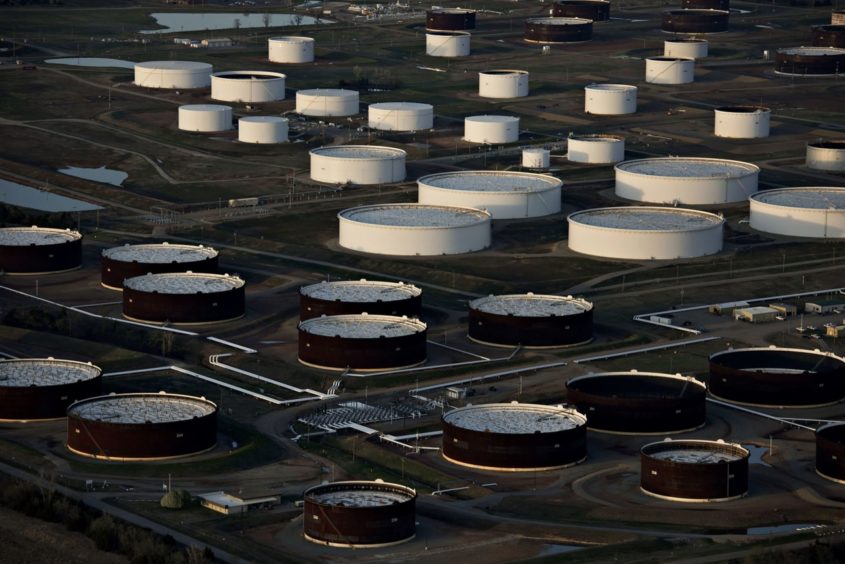
Oil rebounded after a steep slump that was triggered by prospects for further crude releases from strategic reserves, the outlook for tighter U.S. monetary policy and weaker demand in virus-hit China.
West Texas Intermediate rose toward $98 a barrel after retreating by more than $5 on Wednesday after the International Energy Agency said that U.S. allies will deploy 60 million barrels from stockpiles. That’s on top of the 180 million-barrel release already announced by President Joe Biden.
Oil has been wracked by intense volatility over the past six weeks as Russia’s invasion of Ukraine roiled commodity markets. In response to the war, Washington and its allies have been trying to punish Russia economically, while also moving to stem the rise in energy prices that’s fanning already-elevated inflation. The scale of the combined crude releases is unprecedented.
“It looks like Asian buyers are taking advantage of lower prices,” said Jeffrey Halley, a senior market analyst at Oanda Asia Pacific Pte. “The war is still going on, Russian sanctions are tightening, and there is still a structural deficit in oil supplies because of that, even with these SPR releases.”
Oil traders were also assessing the consequences of a hawkish pivot from the Federal Reserve as policy makers rein in the support they deployed to cushion the impact of the pandemic. In addition to rate rises, the Fed signaled it will reduce its bond holdings at a maximum pace of $95 billion a month.
Prices
- West Texas Intermediate for May delivery rose 1.7% to $97.84 a barrel on the New York Mercantile Exchange at 7:02 a.m. in London.
- Brent for June settlement climbed 1.9% to $103.00 a barrel on the ICE Futures Europe exchange after dropping 5.2% on Wednesday.
China, the world’s biggest crude importer, has been trying to stamp out a virus outbreak that’s prompted lockdowns, including in the commercial hub of Shanghai. As officials tackle the challenge, tankers carrying 22 million barrels of Russian, Iranian and Venezuelan oil are piling up off the coast, Kpler said.
While oil markets are still in backwardation, a bullish pattern where near-term contracts are more expensive that later-dated ones, there’s been a significant narrowing of key differentials in recent days as traders reassess the outlook. Brent’s prompt spread — the gap between its two nearest contracts — was 89 cents a barrel in backwardation, down from $3.20 a week ago.